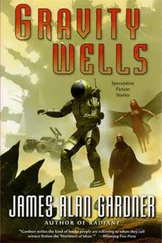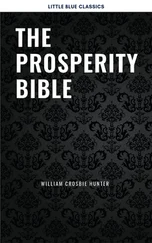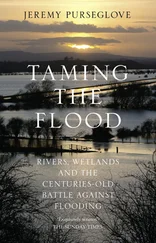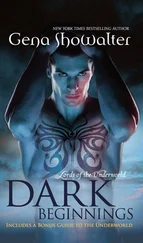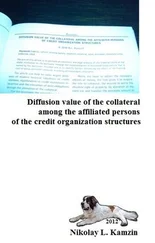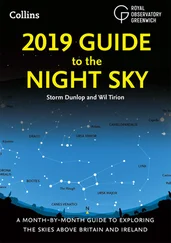A writer of classic prose must simulate two experiences: showing the reader something in the world, and engaging her in conversation. The nature of each experience shapes the way that classic prose is written. The metaphor of showing implies that there is something to see. The things in the world the writer is pointing to, then, are concrete: people (or other animate beings) who move around in the world and interact with objects. 2The metaphor of conversation implies that the reader is cooperative . The writer can count on her to read between the lines, catch his drift, and connect the dots, without his having to spell out every step in his train of thought. 3
Classic prose, Thomas and Turner explain, is just one kind of style, whose invention they credit to seventeenth-century French writers such as Descartes and La Rochefoucauld. The differences between classic style and other styles can be appreciated by comparing their stances on the communication scenario: how the writer imagines himself to be related to the reader, and what the writer is trying to accomplish.
Classic style is not a contemplative or romantic style, in which a writer tries to share his idiosyncratic, emotional, and mostly ineffable reactions to something. Nor is it a prophetic, oracular, or oratorical style, where the writer has the gift of being able to see things that no one else can, and uses the music of language to unite an audience.
Less obviously, classic style differs from practical style, like the language of memos, manuals, term papers, and research reports. (Traditional stylebooks such as Strunk and White are mainly guides to practical style.) In practical style, the writer and reader have defined roles (supervisor and employee, teacher and student, technician and customer), and the writer’s goal is to satisfy the reader’s need. Writing in practical style may conform to a fixed template (a five-paragraph essay, a report in a scientific journal), and it is brief because the reader needs the information in a timely manner. Writing in classic style, in contrast, takes whatever form and whatever length the writer needs to present an interesting truth. The classic writer’s brevity “comes from the elegance of his mind, never from pressures of time or employment.” 4
Classic style also differs subtly from plain style, where everything is in full view and the reader needs no help in seeing anything. In classic style the writer has worked hard to find something worth showing and the perfect vantage point from which to see it. The reader may have to work hard to discern it, but her efforts will be rewarded. Classic style, Thomas and Turner explain, is aristocratic, not egalitarian: “Truth is available to all who are willing to work to achieve it, but truth is certainly not commonly possessed by all and is no one’s birthright.” 5 The early bird gets the worm, for example, is plain. The early bird gets the worm, but the second mouse gets the cheese is classic.
Classic style overlaps with plain and practical styles. And all three differ from self-conscious, relativistic, ironic, or postmodern styles, in which “the writer’s chief, if unstated, concern is to escape being convicted of philosophical naiveté about his own enterprise.” As Thomas and Turner note, “When we open a cookbook, we completely put aside—and expect the author to put aside—the kind of question that leads to the heart of certain philosophic and religious traditions. Is it possible to talk about cooking? Do eggs really exist? Is food something about which knowledge is possible? Can anyone else ever tell us anything true about cooking? … Classic style similarly puts aside as inappropriate philosophical questions about its enterprise. If it took those questions up, it could never get around to treating its subject, and its purpose is exclusively to treat its subject.” 6
The different prose styles are not sharply demarcated, and many kinds of writing blend the different styles or alternate between them. (Academic writing, for example, tends to mix practical and self-conscious styles.) Classic style is an ideal. Not all prose should be classic, and not all writers can carry off the pretense. But knowing the hallmarks of classic style will make anyone a better writer, and it is the strongest cure I know for the disease that enfeebles academic, bureaucratic, corporate, legal, and official prose.
At first glance classic style sounds naïve and philistine, suited only to a world of concrete goings-on. Not so. Classic style is not the same as the common but unhelpful advice to “avoid abstraction.” Sometimes we do have to write about abstract ideas. What classic style does is explain them as if they were objects and forces that would be recognizable to anyone standing in a position to see them. Let’s see how classic style is used by the physicist Brian Greene to explain one of the most exotic ideas the human mind has ever entertained, the theory of multiple universes. 7
Greene begins with the observation by astronomers in the 1920s that galaxies were moving away from each other:
If space is now expanding, then at ever earlier times the universe must have been ever smaller. At some moment in the distant past, everything we now see—the ingredients responsible for every planet, every star, every galaxy, even space itself—must have been compressed to an infinitesimal speck that then swelled outward, evolving into the universe as we know it.
The big-bang theory was born. … Yet scientists were aware that the big-bang theory suffered from a significant shortcoming. Of all things, it leaves out the bang. Einstein’s equations do a wonderful job of describing how the universe evolved from a split second after the bang, but the equations break down (similar to the error message returned by a calculator when you try to divide 1 by 0) when applied to the extreme environment of the universe’s earliest moment. The big bang thus provides no insight into what might have powered the bang itself.
Greene does not tut-tut over the fact that this reasoning depends on complex mathematics. Instead he shows us, with images and everyday examples, what the math reveals. We accept the theory of the big bang by watching a movie of expanding space running backwards. We appreciate the abstruse concept of equations breaking down through an example, division by zero, which we can understand for ourselves in either of two ways. We can think it through: What could dividing a number into zero parts actually mean? Or we can punch the numbers into our calculators and see the error message ourselves.
Greene then tells us that astronomers recently made a surprising discovery, which he illustrates with an analogy:
Just as the pull of earth’s gravity slows the ascent of a ball tossed upward, the gravitational pull of each galaxy on every other must be slowing the expansion of space. … [But] far from slowing down, the expansion of space went into overdrive about 7 billion years ago and has been speeding up ever since. That’s like gently tossing a ball upward, having it slow down initially, but then rocket upward ever more quickly.
But soon they found an explanation, which he illustrates with a looser simile:
We’re all used to gravity being a force that does only one thing: pull objects toward each other. But in Einstein’s … theory of relativity, gravity can also … push things apart. … If space contains … an invisible energy, sort of like an invisible mist that’s uniformly spread through space, then the gravity exerted by the energy mist would be repulsive.
The dark energy hypothesis, however, led to yet another mystery:
When the astronomers deduced how much dark energy would have to permeate every nook and cranny of space to account for the observed cosmic speedup, they found a number that no one has been able to explain … :
Читать дальше


